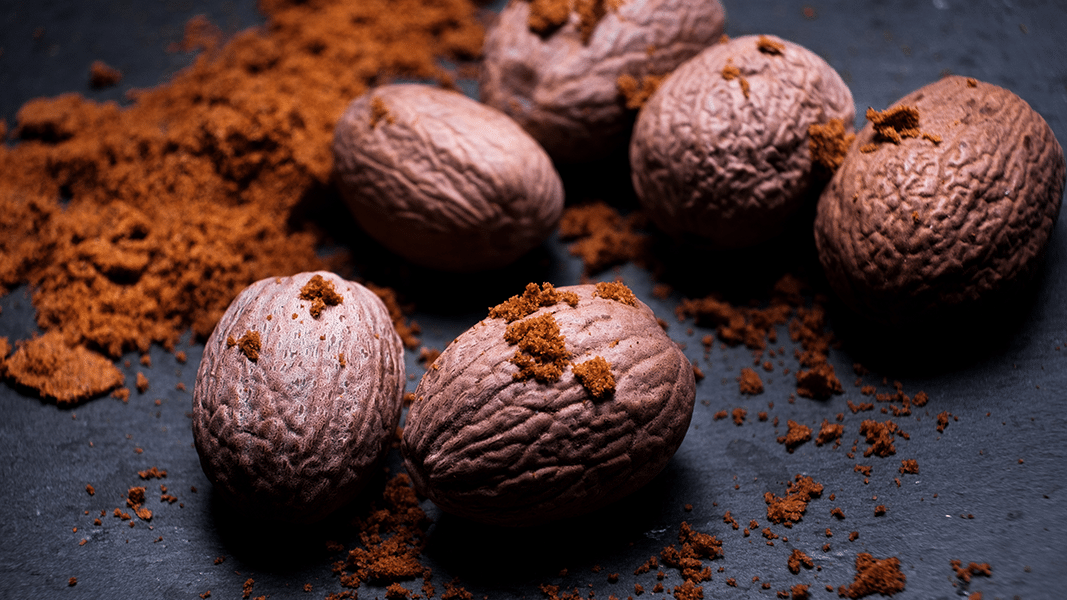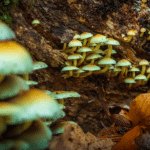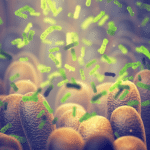Nutmeg, Myristica fragrans, is known as a pleasant winter spice. But thanks to myristicin and other mescaline-like molecules, nutmeg is hallucinogenic in large doses.
Scientists at Chicago State University recently reported on how chemicals in nutmeg may interact with the endocannabinoid system, too. Their study, published in the Journal of Pharmacy and Pharmacology screened thirteen compounds in nutmeg for their ability to delay endocannabinoid breakdown, measured as the inhibition of FAAH and MAGL. These two enzymes are tasked with converting the majority of anandamide and 2-AG into one of their inflammatory cousins, arachidonic acid. The researchers found that a few of nutmeg’s chemicals inhibited FAAH, but none were considered particularly active at MAGL. The inhibition was reversible, meaning that FAAH enzyme activity could be restored by washing the chemical away. This is important, because it appears that irreversible FAAH inhibitors may have more severe side effects. A molecule called 5′-methoxylicarin A was the most potent FAAH inhibitor. The scientists went on to test this chemical in a mouse model of anxiety and showed that it could reduce anxious behaviors. (But it’s not clear that it has anxiolytic properties at realistic doses.) The authors hope that their study provides “a plausible explanation to the long-standing reputation of nutmeg as an inferior substitute for marijuana.” This is one of many papers highlighting the natural abundance of endocannabinoid-modulating compounds.
Adrian Devitt-Lee is a research scientist and longtime Project CBD contributor. © Copyright, Project CBD. May not be reprinted without permission.







